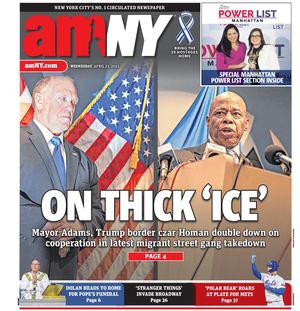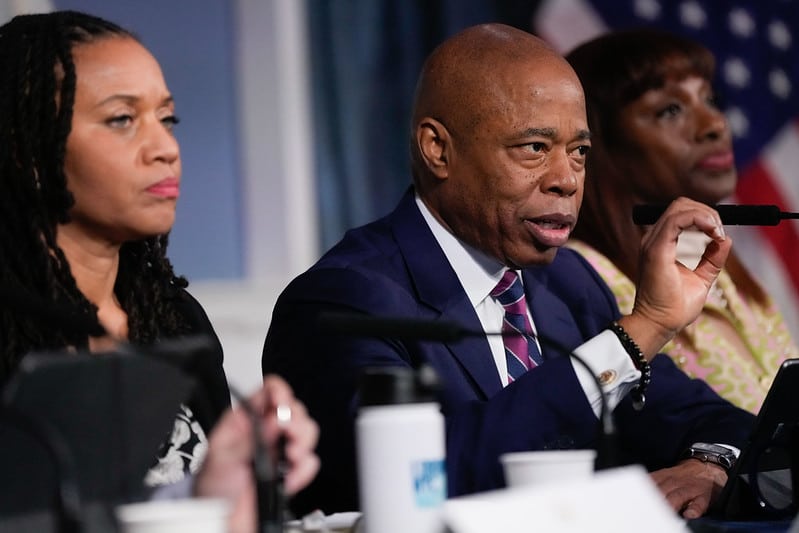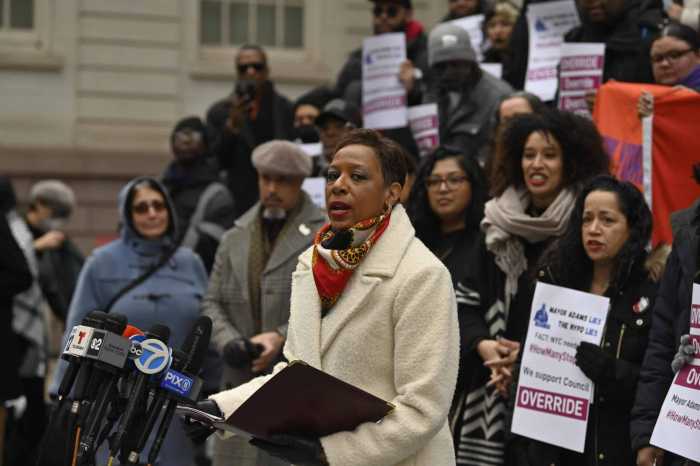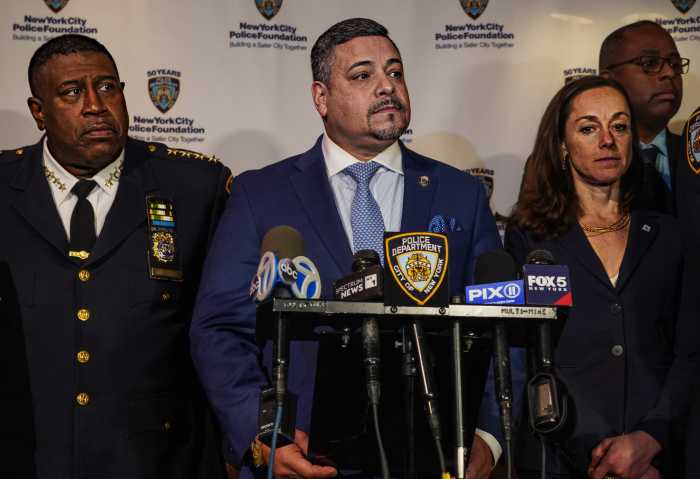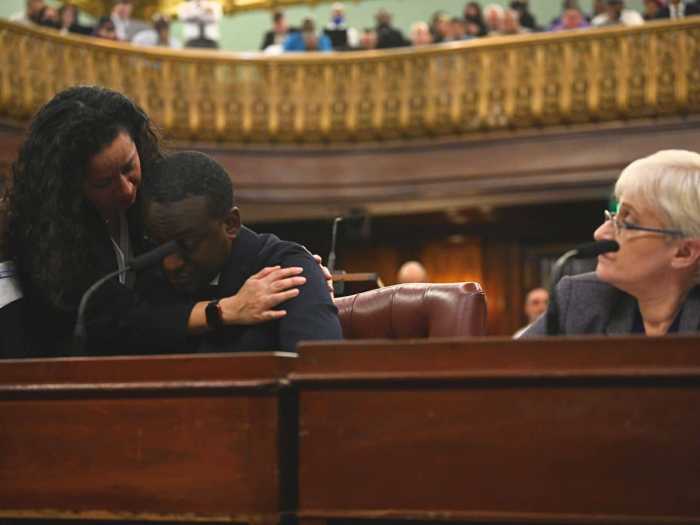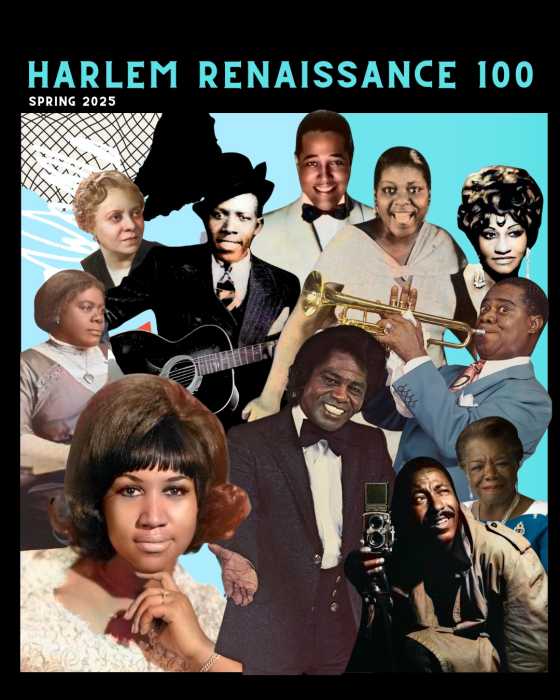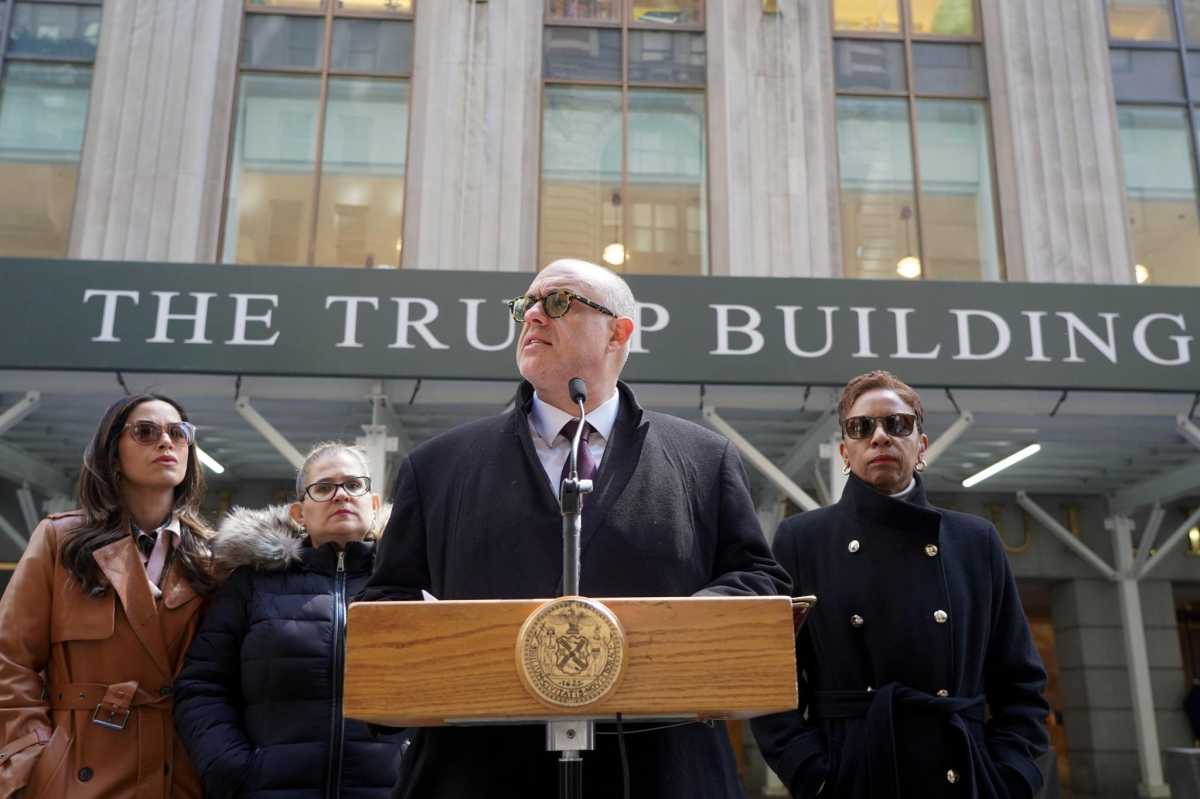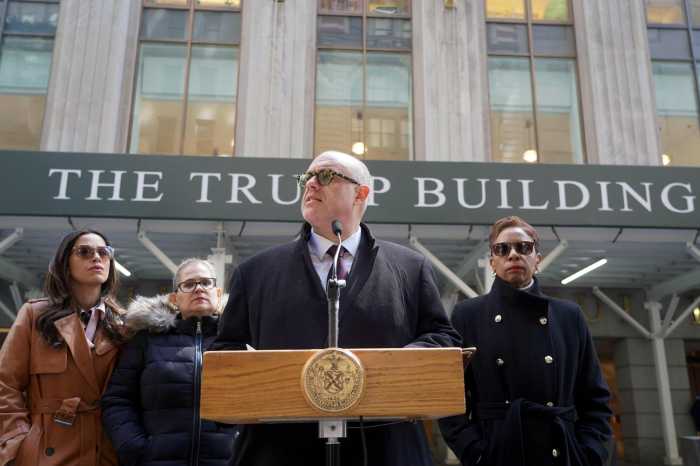Mayor Eric Adams on Tuesday railed against a City Council bill aimed at increasing police transparency ahead of an expected vote on the measure this week.
Adams charged that the legislation that would require the the NYPD to document lower-level civilian stops, dubbed the “How Many Stops Act,” would endanger public safety by jamming up the NYPD with mountains of additional paperwork.
“We are about to pass a bill that is going to damage our ability to keep the city safe because of the police resources that are going to be used,” Adams said during his weekly off-topic news conference at City Hall on Tuesday.
“This bill is going to tie up all police officers, take them off patrol and create this paper bureaucracy,” he added.
City Council leadership has pushed back on that narrative and accused the mayor of peddling “misinformation” about the bill. They argue it is necessary to shine a light on police interactions that are not currently documented.
Public Advocate Jumaane Williams, one of the legislation’s prime sponsors along with Council Member Alexa Aviles (D-Brooklyn), charged the mayor’s opposition is simply the same resistance to police transparency that was present when Rudy Giuliani was mayor in the 1990s and early 2000s.
“Unfortunately, from Rudy Giuliani to now Eric Adams, we see this type of pushback anytime we discuss transparency and accountability,” Williams said during his own virtual press briefing following the mayor’s on Tuesday.
But Adams would not say if he plans to veto the bill were it to pass the council on Wednesday — even though he indicated during a Sunday interview on WCBS-TV that he would not sign it. If the mayor does not sign or veto the bill for a certain period it automatically becomes law.
Thus far, Adams has only vetoed two bills during his mayoralty. The council overruled his second veto, over a bill to expand access to city-issued housing vouchers, in July.
Williams said he believes the legislation will pass the council by a veto-proof majority, which means lawmakers would have enough support to override the mayor’s veto — a move that would require 34 votes in favor.
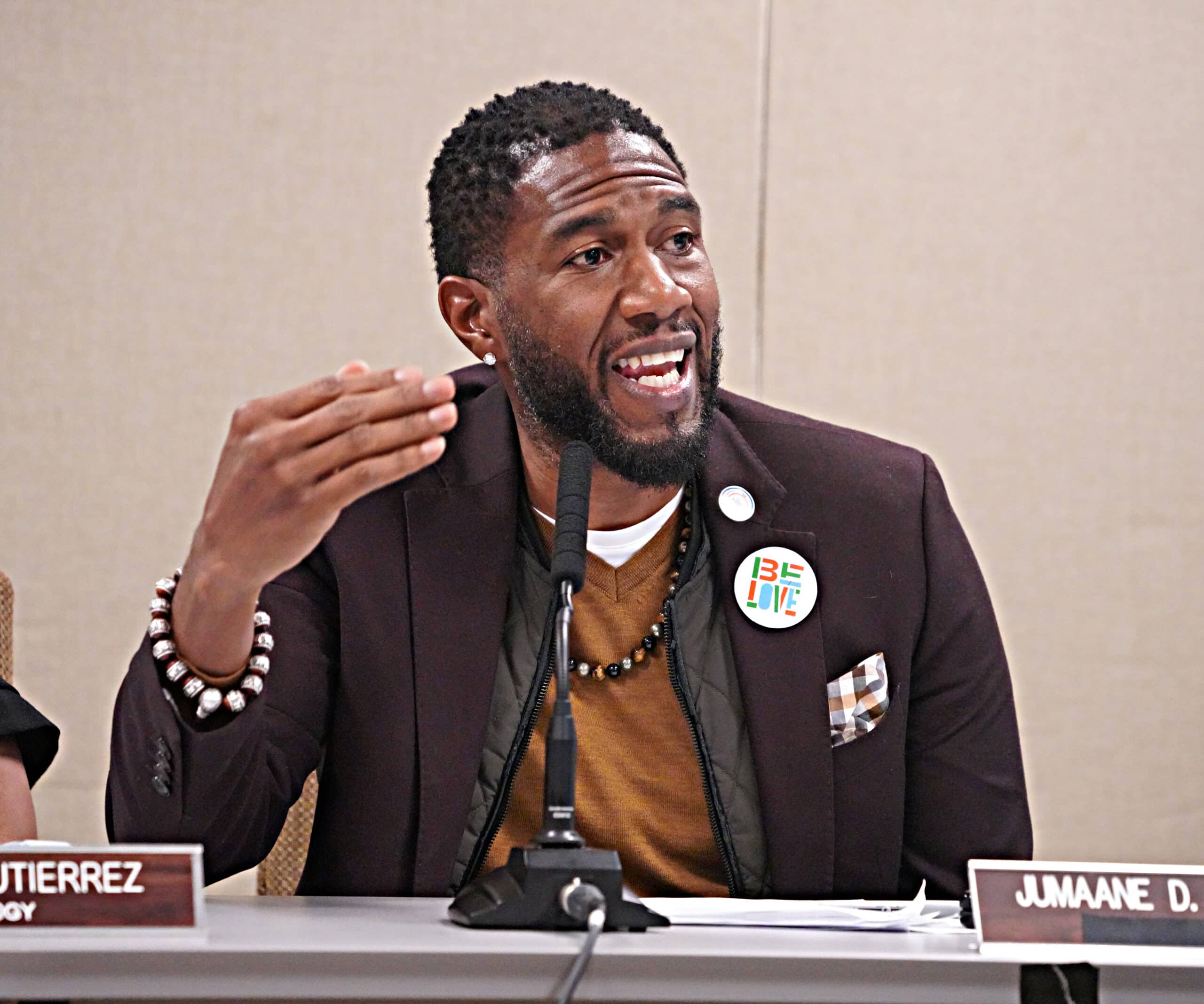
The How Many Stops Act is designed to bring more transparency to how officers are justifying the type of investigative stops they use on civilians, particularly Black and brown individuals who are often the target of police encounters. The legislation would require officers to report on lower level stops — “Level 1” and “Level 2” encounters — on top of “Level 3” stops, known as “stop-question-and-frisk.” Presently cops are only required to document Level 3 interactions.
Under the bill, officers would have to record demographic information about the individuals they stop, including the person’s race, gender and how they appear to an officer.
“What we said was, ‘well, let’s get some data on the one [and] two stops, so no one is guessing or giving anecdotes,’” Williams said. “We’re actually seeing what the data says. So all of us, the administration, PD, advocates, council members … the public advocate, can all look at the same data and figure out what it is that we need to do here.”
Level 1 encounters involve a request for general information, as long as the officer has an “objective credible reason,” according to the council. This level of encounter does not necessarily mean the officer believes there was any criminality and the civilian has a right to walk away.
But the mayor’s office argues Level 1 stops go even further.
Adams’ chief counsel, Lisa Zornberg, on Tuesday claimed that Level 1 stops include everything from cops approaching a tourist whom they believe to be lost in order to give them directions to asking a bodega owner if they have concerns about crime in the area.
“A level 1, as defined currently, really describes any interaction between a police officer and a citizen, which is investigative in nature for either a public service function or a law enforcement function,” Zornberg said.
The chief counsel also insisted that the time it would take cops to record details about each interaction would quickly add up and discourage them from engaging with the communities they are assigned to patrol.
“This bill, as currently written, would incentivize police officers to do the exact opposite of what we want from an effective police force, engaging in community policing,” she said.
Adams claimed that recording interactions for just six people could add up to 30 minutes of paperwork for an officer. All of that time spent filling out forms, he added, is time they will not be on patrol.
Council leadership and Williams both rebuked the mayor’s and Zornberg’s assertions, casting them as misinformation. They insisted that Level 1 interactions specifically do not include casual conversations with cops or instances where officers are providing assistance to civilians.
“Int. 586 is not about capturing officers’ casual conversations and interactions to assist the public, despite rampant misinformation being spread about the bill,” Council Speaker Adrienne Adams, who supports the bill, said in a statement. “This legislation provides basic data and transparency on investigative stops that intrude in people’s daily lives, and creates a uniform standard of reporting to replace the current inconsistency that has contributed to severe underreporting and data gaps.”
Proponents of the bill also assert that filling out the information will not take officers much extra time, as it would simply involve them filling out a form on their department-issued smartphones, which they already must do for Level 3 stops.
“Everything now is electronic,” the public advocate said. “So what we said is on the smartphone, it can be a simple drop down menu, that is about four or five questions… It can be just tapping, so not even a lot of writing. That should take 10-20 seconds at the most.”
Williams said that they also added a six-month implementation period in the bill, so the NYPD would have time to make the necessary technology updates to be in compliance.
Read more: NY pols seek to block Trump from the 2024 ballot through legal action.
